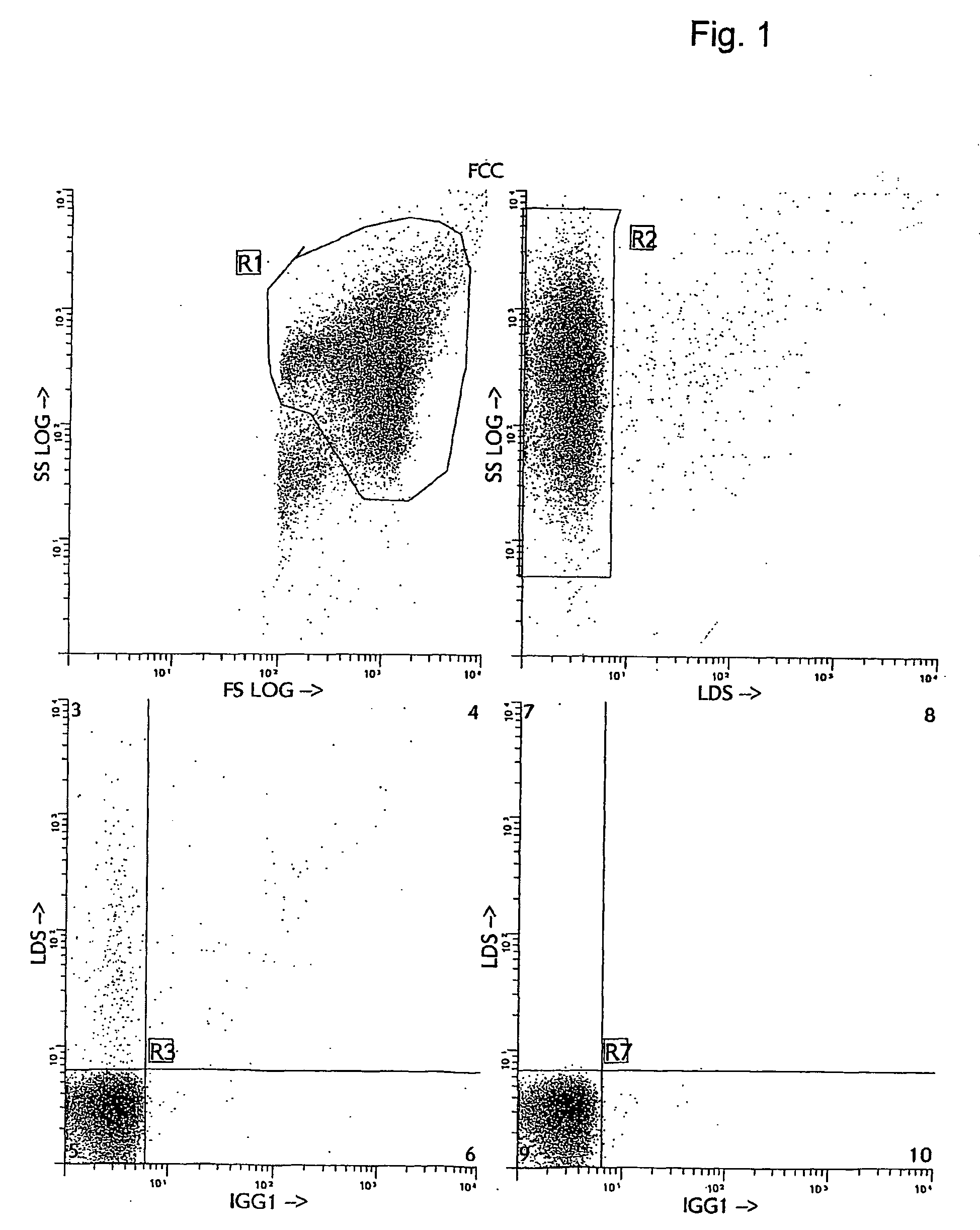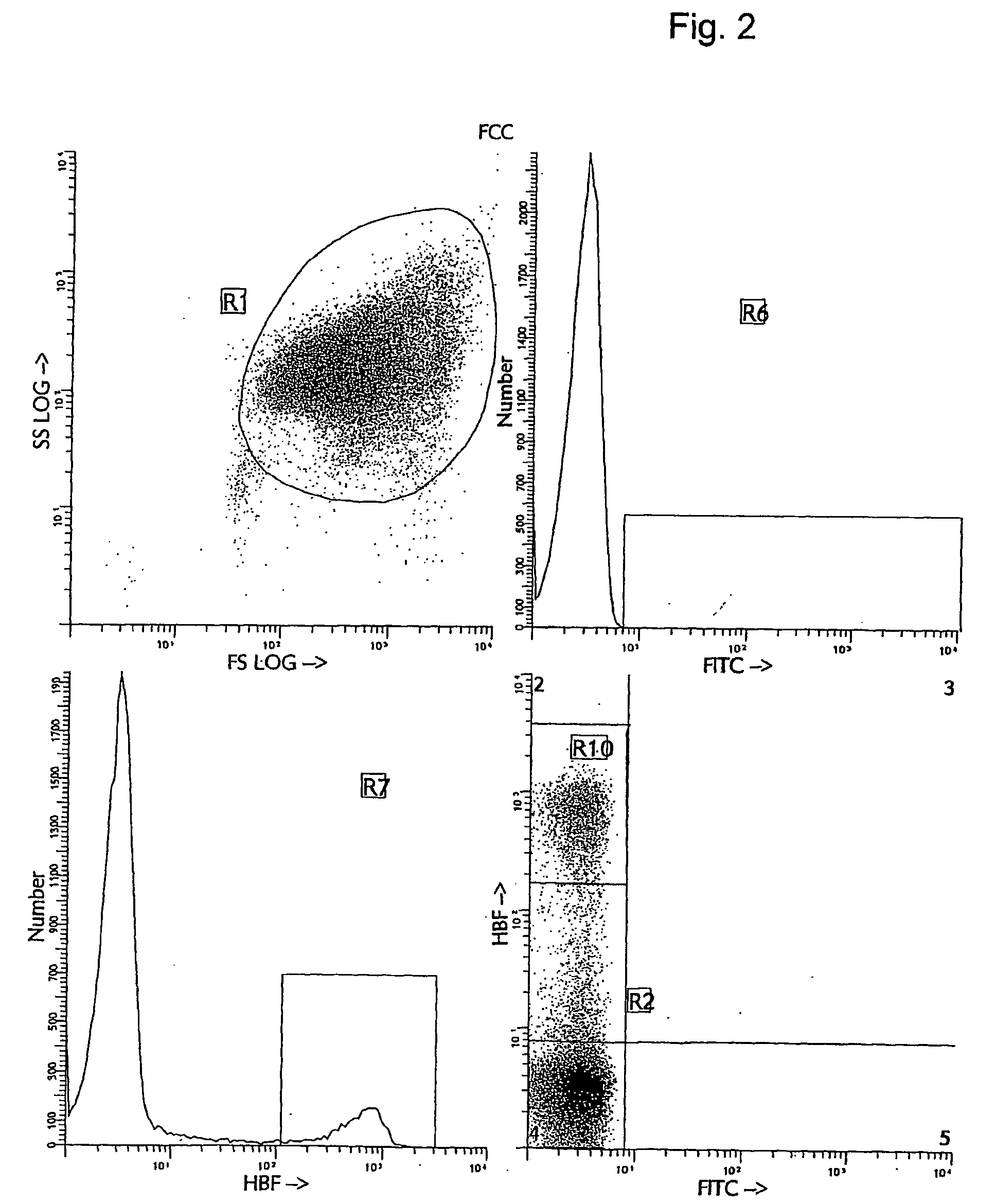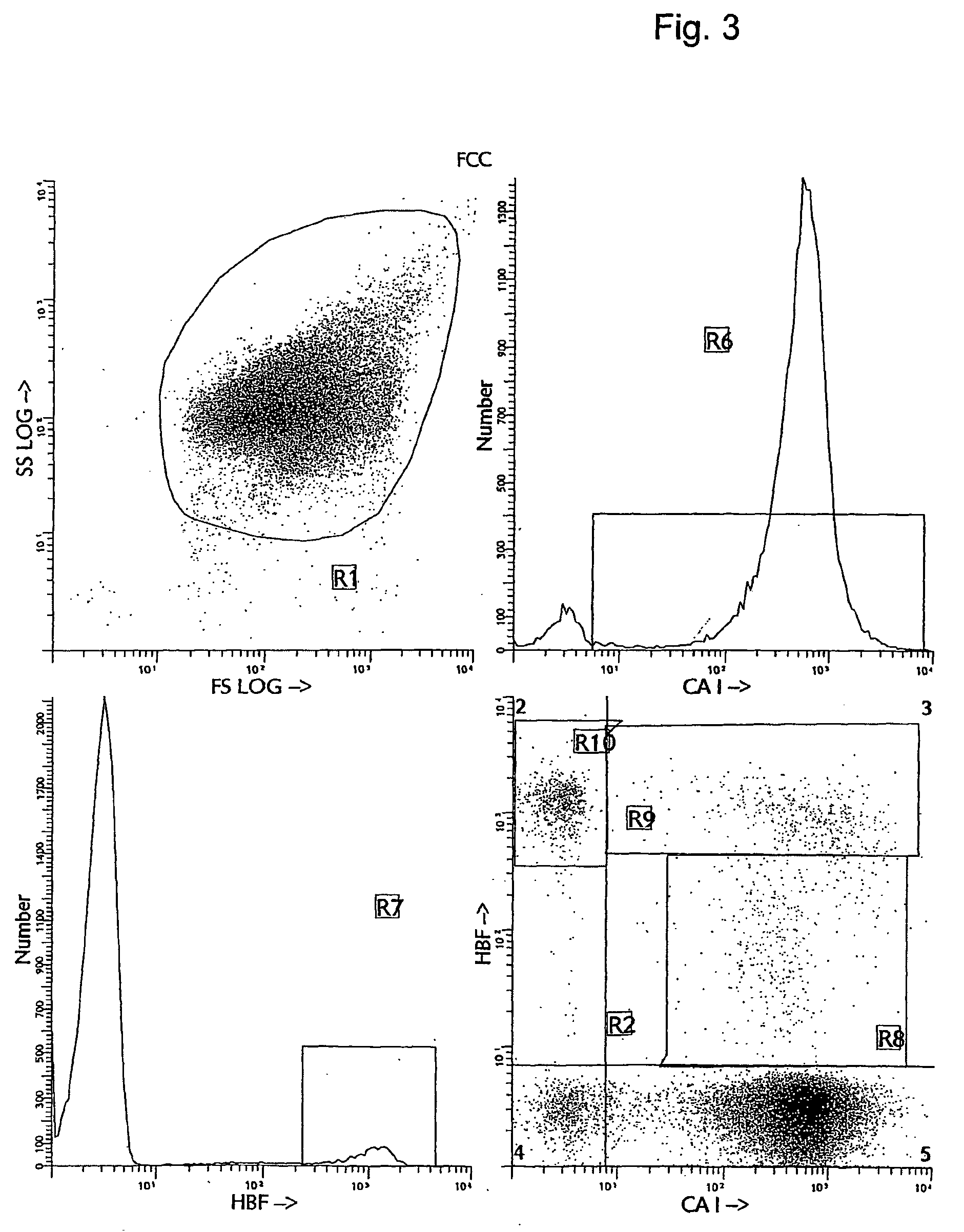Determination and quantification of red blood cell populations in samples
- Summary
- Abstract
- Description
- Claims
- Application Information
AI Technical Summary
Benefits of technology
Problems solved by technology
Method used
Image
Examples
Embodiment Construction
[0038] Several alternative and more accurate screening methods to detect FMH using flow cytometry have been proposed and described. The first reports investigating the feasibility of using flow cytometry for fetal cell counting primarily relied upon the detection of the human D antigen on the cell surface of RBCs (10, 11, 12, 13). These approaches all demonstrated greater sensitivity and precision than manual methods. However, the use of anti-RhD is applicable only to the clinical situations with Rh- or D-antigen incompatibility and cannot be utilized in all cases of maternal trauma and suspected FMH. Several other methods for flow cytometric detection of fetal cells in maternal peripheral blood have recently been described (14, 15, 16, 17). The methods differ in their means of using various cellular fixation and permeabilization steps, in combination with the intracellular detection of HbF antigen using anti-HbF antibodies. The flow cytometric anti-HbF approach has several potentia...
PUM
| Property | Measurement | Unit |
|---|---|---|
| Reactivity | aaaaa | aaaaa |
| Fluorescence | aaaaa | aaaaa |
| Antigenicity | aaaaa | aaaaa |
Abstract
Description
Claims
Application Information
 Login to View More
Login to View More - R&D
- Intellectual Property
- Life Sciences
- Materials
- Tech Scout
- Unparalleled Data Quality
- Higher Quality Content
- 60% Fewer Hallucinations
Browse by: Latest US Patents, China's latest patents, Technical Efficacy Thesaurus, Application Domain, Technology Topic, Popular Technical Reports.
© 2025 PatSnap. All rights reserved.Legal|Privacy policy|Modern Slavery Act Transparency Statement|Sitemap|About US| Contact US: help@patsnap.com



